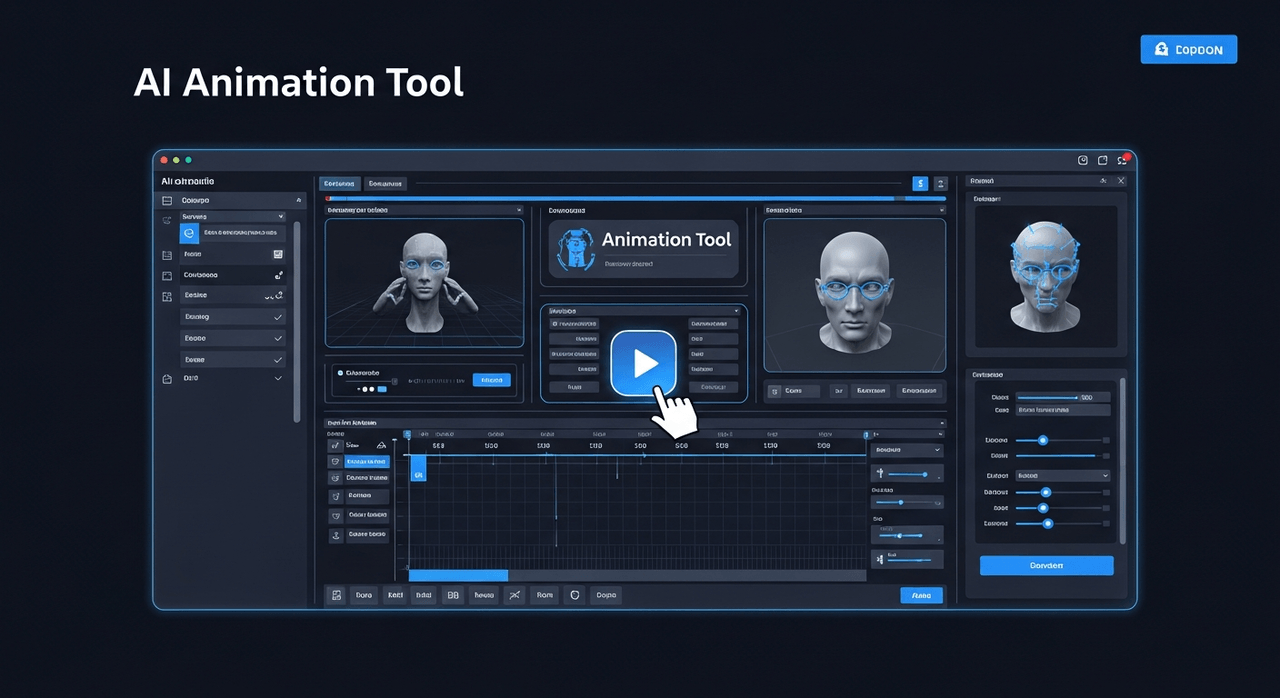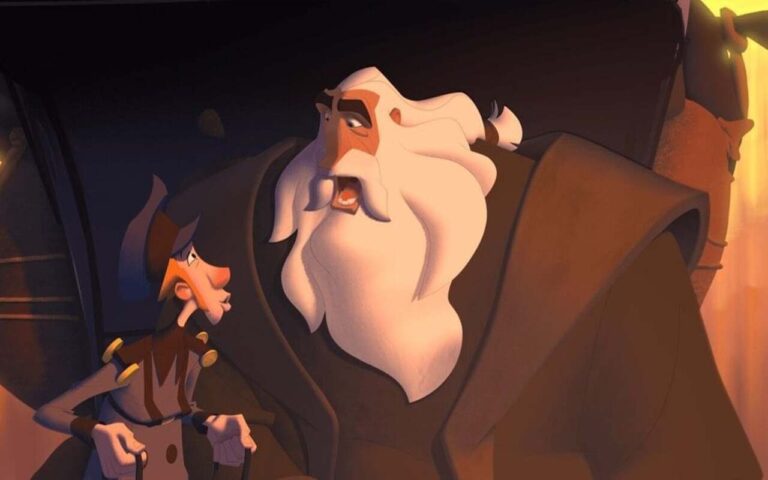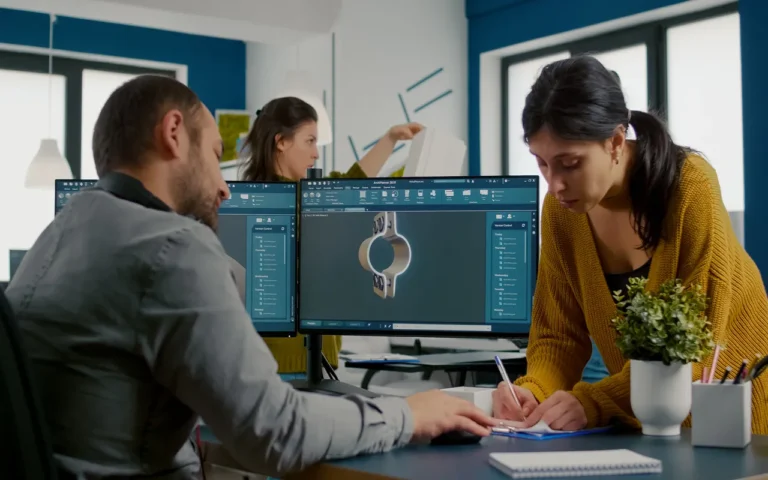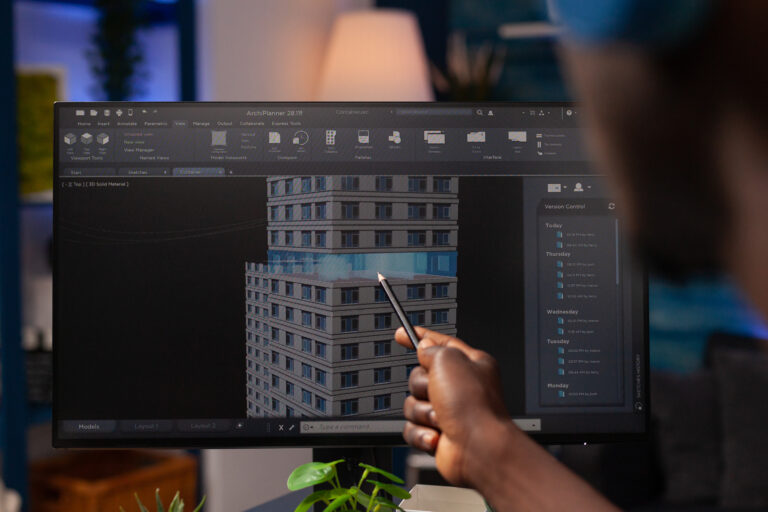Animation is a means of creating lifelike movement in characters, environments, and their surrounding props.
Fifth on our main 12 principles of animation is follow-through and overlapping action. Animators and animation services rely on such techniques to make motion natural and appealing, enable creators to amplify characters and props, and create various styles from realistic movements to more cartoony and exaggerated movements.
In this article, we will explore follow-through and overlapping action, discuss what each one entails, their origin, and how we can use them most efficiently. Furthermore, we will review some renowned examples to highlight their strength and appeal.
Hope you enjoy the journey!
What is Follow Through?
Follow-through refers to how an object or character continues to move after the action that set it in motion has finished.
For example, when a character abruptly stops, their clothes keep moving for a few frames before settling. This adds realism and weight to the movement.
Using the follow-through technique, animators can create the illusion of physics and momentum, add weight and anchoring, and bring out nuances of inertia after the action.
A practical example is when Stella stops running in Spiritfarer, and her hat and body continue moving after she stops, giving her movements more gravitas and weight.
The extra follow-through makes Stella feel firmly anchored in the physical world, as her clothes don’t immediately freeze when she does.
Subtly, this grounds the exaggerated and cartoony motions in realistic physics. The following GIF shows how this technique was used in the said video game.
What is Overlapping Action?
Overlapping action is when a character’s movements blend together smoothly rather than stopping completely between actions.
For instance, a character may start walking while still finishing picking up a suitcase. Overlapping action connects movements fluidly, avoids unnatural pauses and poses between actions, and makes motions more lifelike and organic.
A practical example is in Toy Story, when Woody’s head bobs and torso rotates in an overlapping wave motion as he animatedly runs, making the action more dynamic.
By not pausing the head bob completely as Woody’s legs begin stepping, the animators overlap the actions into one continuous sequence, achieving a more natural and cartoonishly exaggerated run.
History and Origins of Follow-Through and Overlapping Action
Where do these techniques originate from? And how are they still valid?
Follow-through and overlapping action go as far back as the Disney Story, and remain among the core animation techniques today due to their applicable, evolving nature.
Disney’s Nine Old Men: The Pioneers of Animation Principles
Disney’s Nine Old Men, a group of legendary animators including Frank Thomas and Ollie Johnston, formalized the 12 principles of animation in the 1930s.
Their work on films like Snow White and the Seven Dwarfs established follow-through and overlapping action as foundational techniques.
These principles, detailed in their 1981 book The Illusion of Life, aimed to make animated characters move with lifelike realism, drawing from real-world physics and biomechanics. Their innovations set such gold industry standards that are still used today!
How These Techniques Transformed Early Animation
In early animation, movements were often stiff and mechanical.
The introduction of follow-through and overlapping action revolutionized life-like visualism by adding fluidity and weight to characters and environment animation.
For example, in Steamboat Willie (1928), Mickey Mouse’s exaggerated motions used subtle follow-through in his tail and ears, making his actions more dynamic.
These techniques allowed animators to transition from simplistic and linear movements to complex sequences to enhance immersion significantly.
Key Differences between Follow-Through and Overlapping Action
Despite their harmonious usage together, follow-through and overlapping action are fundamentally different:
- Follow-Through: This technique focuses on the continuation of motion after an action stops to highlight inertia and weight.
For example, a character’s hair continuing to sway after they stop moving conveys realistic and physics-based action. Follow-through is about the aftermath of a primary action. - Overlapping Action: This technique involves different parts of a character moving at different rates or times during an action to express fluid transitions.
For instance, a character’s arms trailing slightly behind their torso as they turn implies life-like movement. Overlapping action refers to simultaneous movements that occur in harmony.
Considering how follow-through adds realism post-action, and overlapping action ensures smoothness during action, both techniques are best used together to create lifelike, dynamic motion.
Implementing Follow-Through and Overlapping Action in Animation
Now, let’s discuss how we should effectively use these techniques to achieve a lifelike and natural motion.
Essential Tips for Beginner Animators
- Study Real-World Motion: Observe how objects and people move in real life.
For example, notice how hair or clothing lags behind a person’s body when they stop suddenly. - Start Simple: Focus on one element, like a character’s hair or cape, to practice follow-through before combining with overlapping action.
- Use Reference Footage: Record yourself or watch videos to understand timing and spacing for natural motion. Tools like Blender or Maya can help visualize these principles.
- Plan Key Poses: Sketch keyframes to establish the primary action, then add follow-through and overlapping details in between.
Advanced Strategies for Professional Animators
Once you have mastered the basics, you can start working on more complex projects, which will evidently have more fluid and realistic appearances!
- Layered Animation: Animate the primary action (for example, torso movement), then blend and layer the secondary elements (such as hair, clothing) with slight delays using software like Maya or Cinema 4D.
- Vary Timing: Adjust the delay between primary and secondary movements based on the character’s weight or material (for example, the different delay between heavy armor vs. flowing silk).
- Use Arcs and Easing: Incorporate arcs in movements and apply slow-in/slow-out principles to enhance the natural flow of follow-through and overlapping actions.
- Iterate with Feedback: Use tools like SyncSketch to review animations frame-by-frame to ensure precise timing and fluid overlaps.
Common Mistakes and How to Avoid Them!
When using follow-through and overlapping action, it’s essential that you neither go overboard nor come short! In other words, if you want to avoid making mistakes, you must pay attention to your timing:
Overdoing Follow-Through: When Less is More!
Excessive follow-through, such as overly exaggerated hair motion, can distract from the main action and make it feel chaotic or unnatural.
One practical solution to avoid such inconsistency is to keep secondary movements subtle unless the style demands exaggeration!
Test your prototype animations iteratively to find the right balance, and ensure follow-through matches the character’s weight and environment, such as slower motion for heavy objects.
Poor Timing in Overlapping Actions: How to Improve Flow
Mistimed overlapping actions can result in disjointed or unnatural movements.
To avoid having a strange-looking motion, you can use timing charts to map out each body part’s movement for smooth overlaps.
You can use animation software like Adobe Animate to have complete and precise control over frame-by-frame timing. You can also study this technique by watching animations like Frozen, where Elsa’s braid flows with precise overlapping timing during her magic gestures, which offers valuable insight.
Why Follow-Through and Overlapping Are Essential!
Using follow-through and overlapping action has many benefits for animation.
Follow-through adds realism, weight, physics, and a sense of momentum, which will impact how believable and appealing the movement is for the viewer.
Overlapping action creates seamless transitions between movements, avoiding disjointed or robotic motions. Together, they make animation feel more lifelike, organic, and fluid.
However, both techniques require skill for any character animation studio to execute well.
Overdoing follow-through can distract from the main action, while poor overlapping can muddle key poses.
They also require more intricate timing and frames of animation than stiff, discrete movements.
Follow-Through and Overlapping in Different Animation Styles
Although we described these two techniques as aids for generating lifelike movements, they also extend beyond realistic animations.
Realistic Animation: Achieving Natural Movements!
In realistic animation, follow-through and overlapping action are applied subtly to mimic real-world physics. Moreover, with physically-based rendering (PBR) techniques, we can further enhance such realism in games up a notch!
In The Incredibles, Mr. Incredible’s cape flows naturally behind him with minimal exaggeration to maintain believability, aligning with human biomechanics and often referencing live-action footage.
Cartoony Animation: Exaggerating for Effect
Follow-through and overlapping action are also exploited to enhance cartoony styles with comedic or dynamic effects.
In Looney Tunes, Bugs Bunny’s ears flop dramatically after a quick turn, enhancing humor through exaggerated timing combined with squash and stretch techniques.
Inspirational Examples from Popular Media
Let’s review some of the most intricate and well-designed examples that encompass these techniques:
Studio Ghibli’s Mastery of Subtle Movements
Studio Ghibli is among the world’s best anime studios that excels at subtle follow-through and overlapping action, creating stunning and cozy visual arts.
- In Spirited Away, Chihiro’s hair flows behind her with follow-through as she rides on Haku’s back, emphasizing their speed and motion. The hair movement serves as a reminder of the forces Chihiro would realistically experience at such speed.
- Similarly, in My Neighbor Totoro, Satsuki’s dress sways gently with follow-through as she runs through fields, with her arms and legs moving in slightly staggered rhythms to create overlapping action.
These subtle touches make Ghibli’s characters feel like living beings with movements that mirror the natural flow of real-world motion, enhancing the emotional resonance of each scene.
Pixar’s Signature Dynamic Action Style
Pixar employs follow-through and overlapping action to amplify character personality and create vibrant, dynamic sequences.
- In Toy Story, Woody’s exaggerated run showcases overlapping action as his head bobs and torso rotates at different rates to highlight his energetic and determined nature.
The fluid overlap of his limbs, combined with follow-through in his hat and lasso, creates a cartoonish yet relatable motion that defines his playful character. - In Finding Nemo, Marlin’s fins flutter with follow-through after he darts forward in a panic, showing his nervous energy and the resistance of water.
Pixar’s animators carefully time these movements to ensure each action feels purposeful. They blend exaggeration with precise overlaps to convey both humor and emotional weight, making their characters instantly engaging and memorable.
Final Words
Similar to each of the 12 principles of animation, follow-through and overlapping action are also vital foundations for creating lifelike motion and captivating animation.
These hand-crafted techniques breathe life into movements and remain essential tools for animators to bring characters to life. These principles help us create the illusion that character animations follow the same physical rules as the real world.
The principles established by Disney’s Nine Old Men continue to enable animators to produce natural, dynamic motion over 80 years later, influencing every studio from Studio Ghibli’s subtle realism to Pixar’s vibrant exaggeration.
Follow-through and overlapping action are indispensable tools for bringing the illusion of life to animation and alluring audiences.









